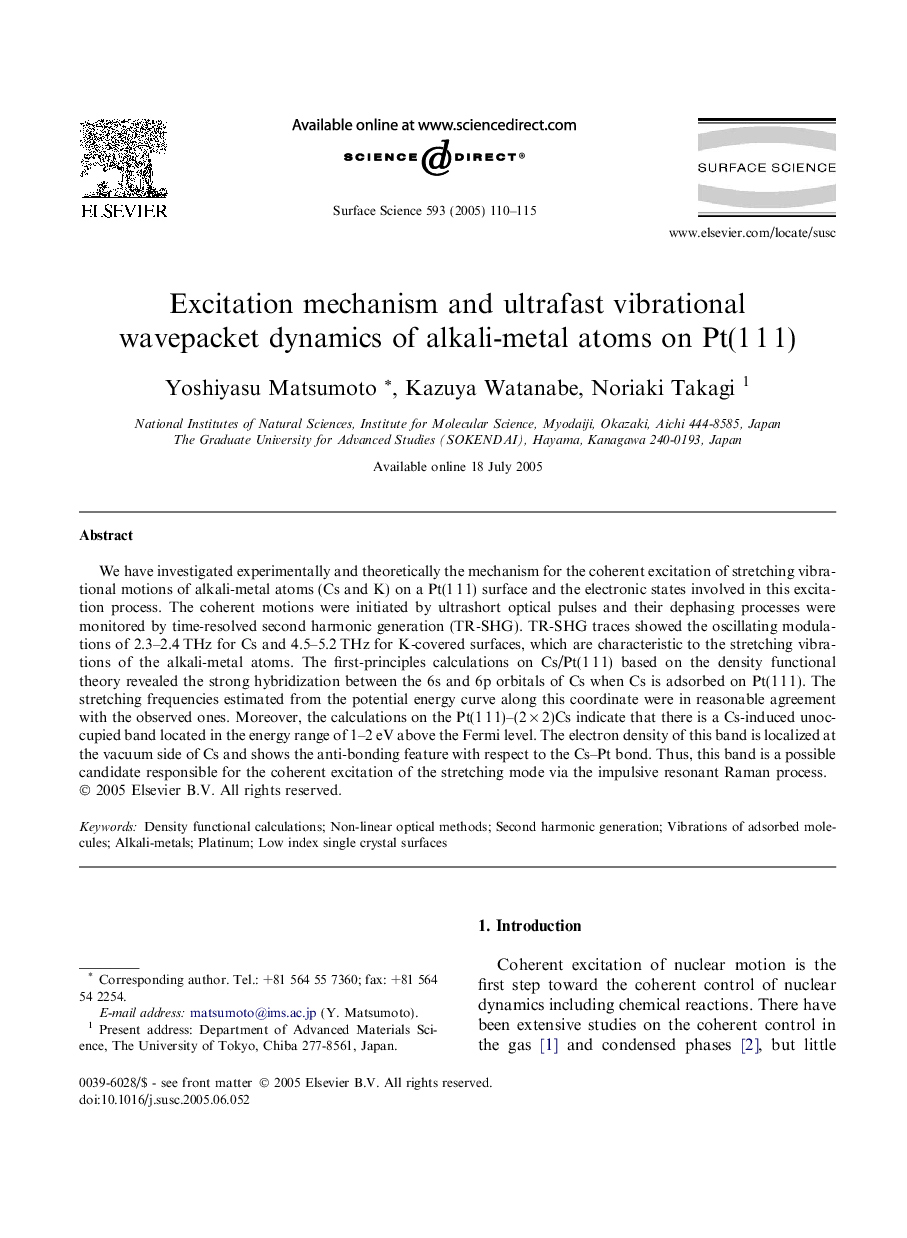| Article ID | Journal | Published Year | Pages | File Type |
|---|---|---|---|---|
| 9595082 | Surface Science | 2005 | 6 Pages |
Abstract
We have investigated experimentally and theoretically the mechanism for the coherent excitation of stretching vibrational motions of alkali-metal atoms (Cs and K) on a Pt(1Â 1Â 1) surface and the electronic states involved in this excitation process. The coherent motions were initiated by ultrashort optical pulses and their dephasing processes were monitored by time-resolved second harmonic generation (TR-SHG). TR-SHG traces showed the oscillating modulations of 2.3-2.4Â THz for Cs and 4.5-5.2Â THz for K-covered surfaces, which are characteristic to the stretching vibrations of the alkali-metal atoms. The first-principles calculations on Cs/Pt(1Â 1Â 1) based on the density functional theory revealed the strong hybridization between the 6s and 6p orbitals of Cs when Cs is adsorbed on Pt(1Â 1Â 1). The stretching frequencies estimated from the potential energy curve along this coordinate were in reasonable agreement with the observed ones. Moreover, the calculations on the Pt(1Â 1Â 1)-(2Â ÃÂ 2)Cs indicate that there is a Cs-induced unoccupied band located in the energy range of 1-2Â eV above the Fermi level. The electron density of this band is localized at the vacuum side of Cs and shows the anti-bonding feature with respect to the Cs-Pt bond. Thus, this band is a possible candidate responsible for the coherent excitation of the stretching mode via the impulsive resonant Raman process.
Keywords
Related Topics
Physical Sciences and Engineering
Chemistry
Physical and Theoretical Chemistry
Authors
Yoshiyasu Matsumoto, Kazuya Watanabe, Noriaki Takagi,
